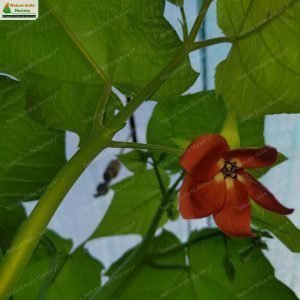Mammea suriga, commonly known as Suriga, is a medium-sized evergreen tree that grows to a height of 10-20 meters. This tree is native and endemic to the Western Ghats of India and is known for its fragrant white flowers and glossy, dark green leaves. The tree thrives in evergreen and moist deciduous forests, and is also found in coastal regions of South India, where it is cultivated for its beautiful and aromatic flowers.
The Suriga tree plays a significant role in its ecosystem, providing a source of food and shelter for various wildlife, while its fragrant flowers attract pollinators. Its versatility and value extend beyond its ecological importance, as it also offers various economic benefits, making it a valuable species in its native habitats.
Habitat
Mammea suriga thrives in evergreen and moist deciduous forests, and is also found in coastal regions of South India.
Planting and Care
-
Soil Requirements: Prefers well-drained loamy or sandy-loam soils.
-
Sunlight Needs: Requires full sun to partial shade.
-
Watering Guidelines: Needs moderate watering, with care to avoid waterlogging.
-
Propagation Methods: Can be propagated by seeds. Seeds should be sown in a well-draining medium and kept moist.
Additional Information
-
Wildlife Importance: The fragrant flowers attract bees and other pollinators, the fruits provide a food source for various wildlife, including birds and small mammals, and the tree offers shelter and habitat for numerous species, contributing to biodiversity.
-
Economic Value: Suriga is often cultivated for its fragrant flowers, which are used to make garlands and other decorative items, and various parts of the tree are used in traditional medicine to treat ailments such as fever and headaches.






